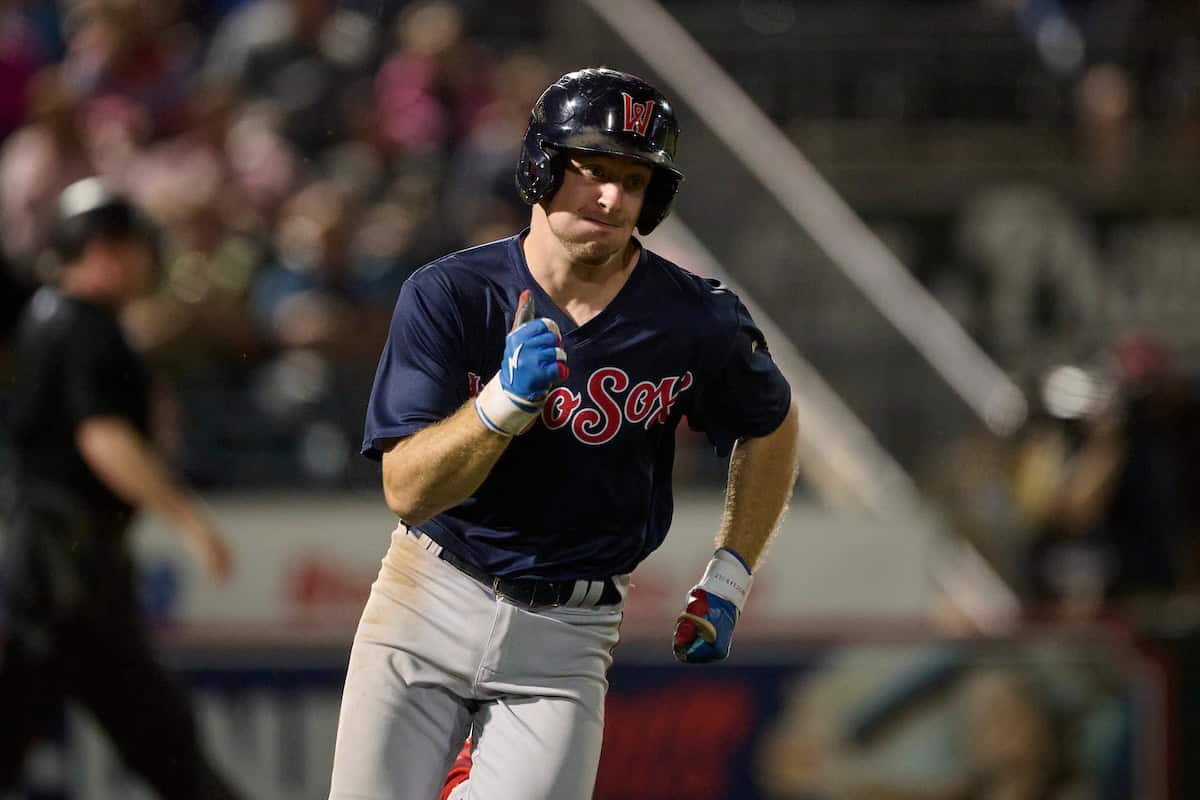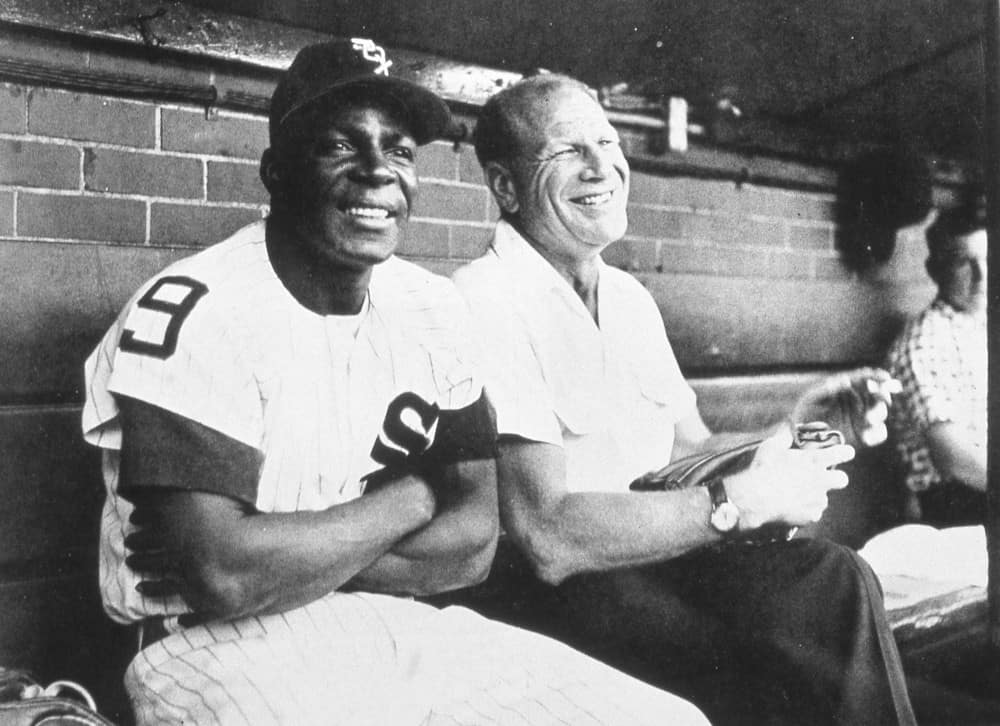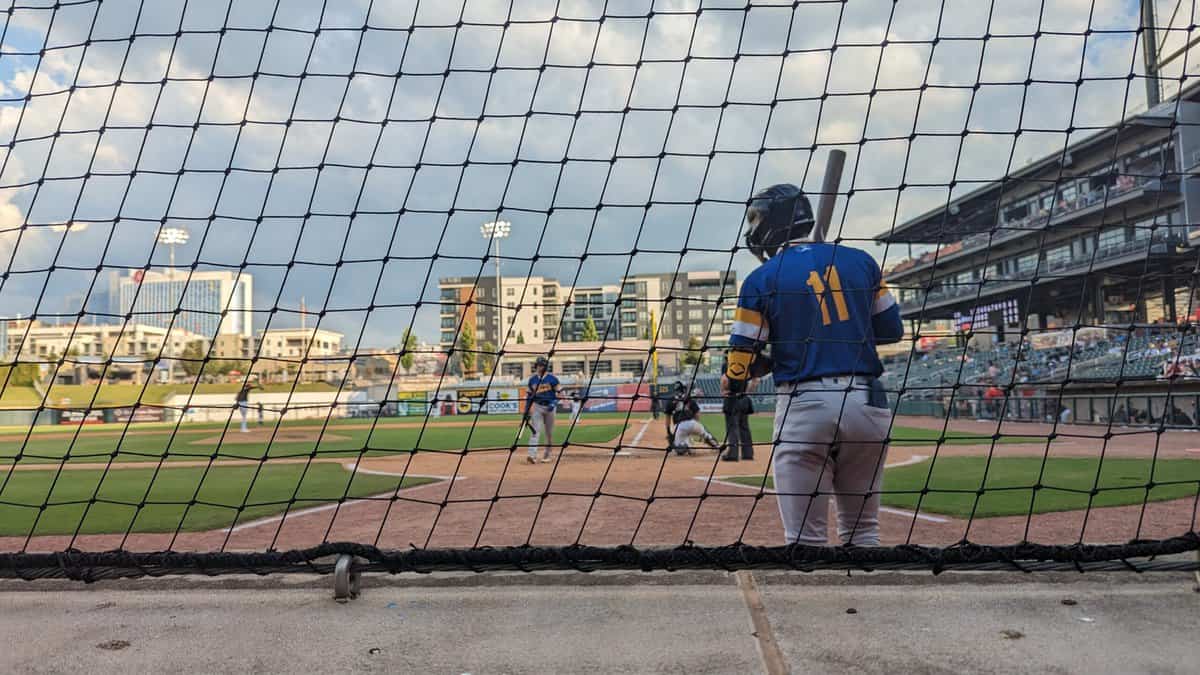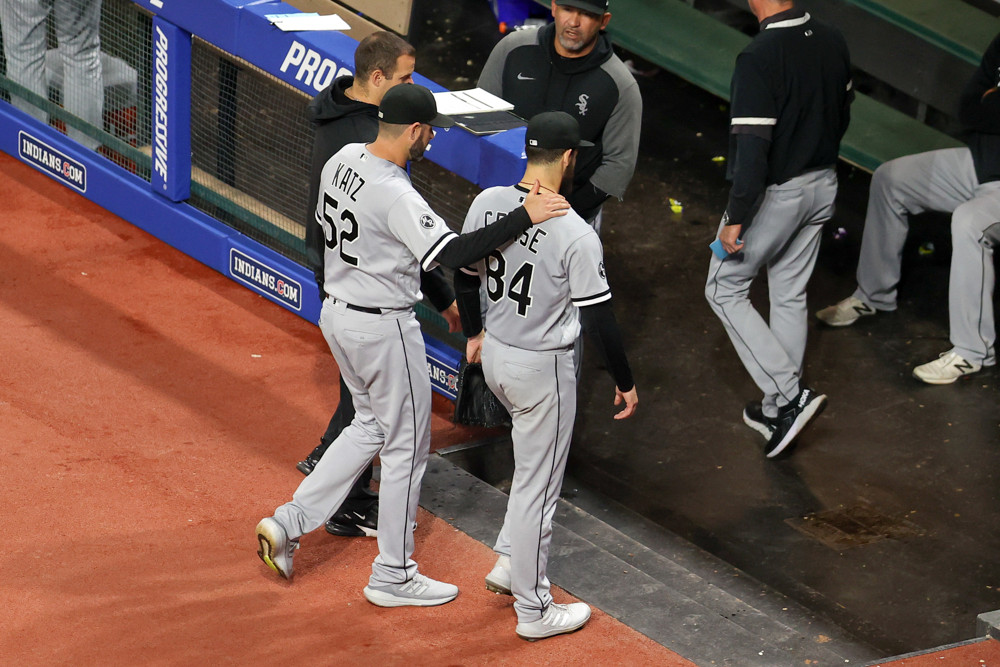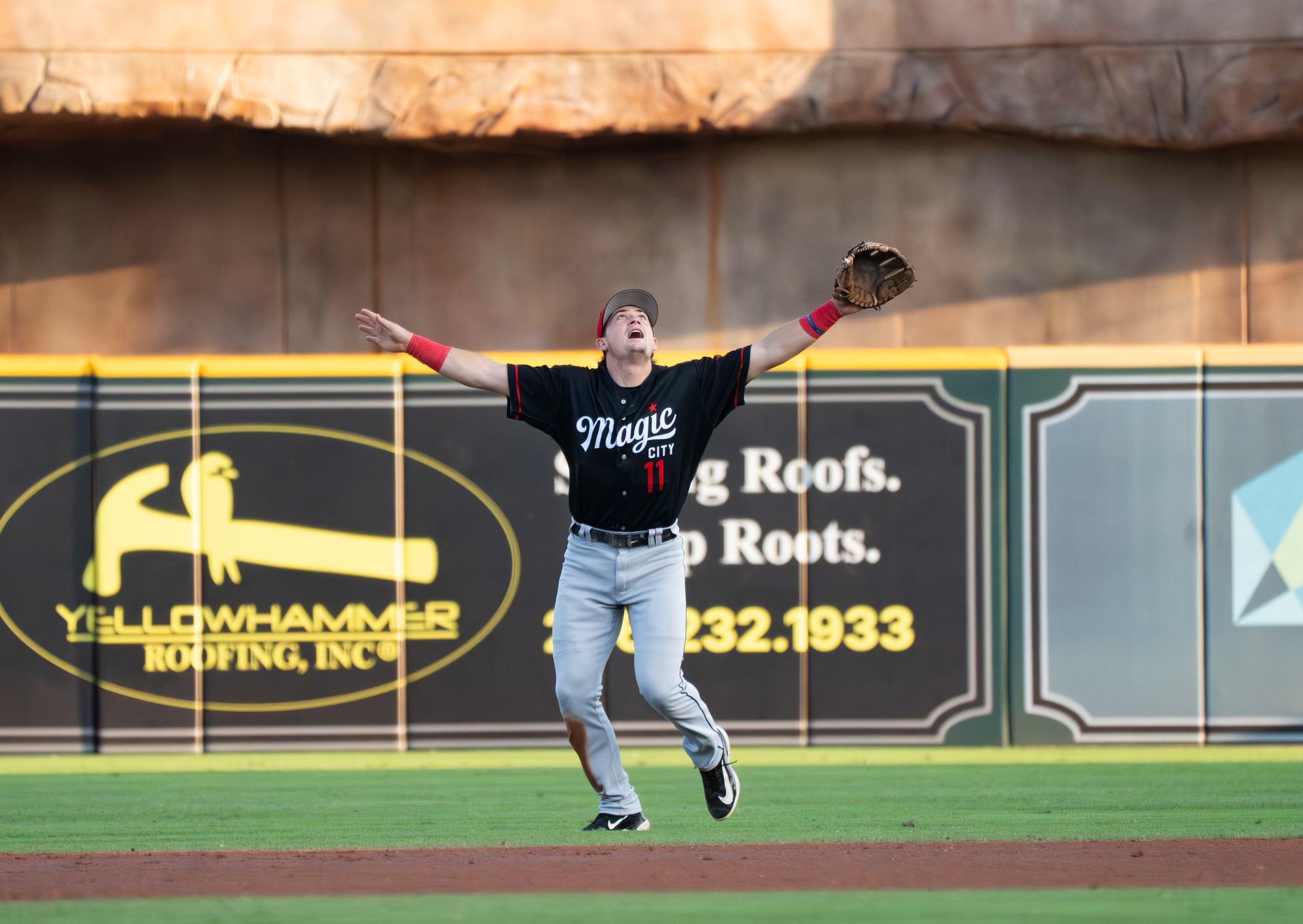When the White Sox hired Ryan Fuller to be their new director of hitting, they made it clear that part of his job was to solidify the connection between the decision process of acquiring new hitters, and how they would develop once they're in-house.
Since the one exciting transaction the White Sox have made this winter was acquiring a trio of developing hitters, it made sense to give Fuller a call.
Kyle Teel
While it encompasses all of 138 minor league games, Teel is a career .301/.404/.444 hitter as a professional. As tempting as it is to prod Fuller into discussing the granular details of an offensive profile, he made it clear there's a lot to be said for long track record of above-average performance. For the 22-year-old Teel, Fuller was particularly taken for how walks and below-average chase rates have been a bedrock of his game for years now.
"Being able to control the zone and walk at a high rate is a skill that is going to allow young hitters to help even when those other skills aren't there," Fuller said. "You may be scuffling, you may not be finding barrels at the rate you want to throughout, but if you're still able to have great at-bats, take a walk, get on base, it such a skill to be able to withstand those highs and lows."
Teel's lefty swing doesn't lack for effort and his raw power seems solid average-to-plus on Trackman, so some scouts see him as a potential power-over-hit type in the majors (and some project vice-versa) as his strikeout rates have sat in the low-20s as a professional. In either case, making enough contact is a prerequisite, and Fuller sees that when Teel's front foot is landing in his swing, he positions himself well to keep his barrel in the zone for a while.
"He's in a strong posture that allows him to hold the bat through the back of the zone, through the front of the zone, with his body rotating really well and not having to make huge adjustments," Fuller said. "Letting that [bat] path stay really stable throughout the zone, he does a really good job connecting that bat and the body together and trusting his path all the way through ... You have to put your body in good spots where your bat path can be on time when everything is good, and when you're off-balance a little bit, it's still going to stay on plane, where you afford yourself the ability to be a little late, shoot a ball oppo, be a little early and ride it out toward that pull-side gap. He's one that shows the ability to do a little bit of both."
Fuller thinks there's room for growth in Teel's approach against same-handed pitchers and his performance against certain shapes of breaking balls. And as much as it's his job to communicate with players and get buy-in on any adjustments, he emphasized that development time is finite and the Sox won't be waiting around for something to go wrong before they make tweaks either. Success in the minors is ultimately not important enough of a reason to hold off on intervening.
Braden Montgomery
When Texas A&M head baseball coach Michael Earley spoke to Sox Machine about Braden Montgomery, he focused on the strike zone discipline gains that his star outfielder made while working with the Aggies' iPitch machine. That remains a big focus in Montgomery's work, and Fuller was pleased that the 21-year-old switch-hitter has already reached out to the Sox with queries on what will be available to him in his new home, which should include at least one prominent equipment upgrade.
But for what fueled Montgomery's 27-homer explosion as a college junior, Fuller was more focused on the mechanical.
"He was more of a contact-oriented hitter [at Stanford], even though he hit 35 home runs over his first two years there," Fuller said. "But he had very different swing than it was at Texas A&M. It was a little bit more narrow-based, didn't use his lower body as much, and it was more upper body dominant with his moves. And then he goes to Texas A&M, makes really great changes with the hitting coach over there, Michael Earley, has a wider base underneath him, allowed him used to the ground really well and tap into even more power."
Fuller feels it's promising that Montgomery has already shown a willingness and ability to pull off significant adjustments, as his pro career will be defined adding more nuance to his swing than simply the raw ingredients -- high-level bat speed and rotational athleticism -- for making consistent contact.
"To go on the road with the Ferrari, you've got to be able to turn around those tight corners, to slow down when you need to, to be able to speed up," Fuller said. "It's the same thing with hitters. We just don't want someone who's going to be able to rotate, but their bat path is side to side, never on plane. You want to be able to use that really good rotation, all that speed, and direct it ... directionally, where you want to hit those baseballs through those gaps. One without the other is going to not let us do what the best players do at the highest levels: They rotate, they have speed, but they keep direction, and they hit line drives, and those line drives go over the fence."
Chase Meidroth
In that vein, while neither Montgomery nor the White Sox hitting development under Paul Janish (and now Fuller as well) have a track record to draw conclusions from yet, Fuller underscored discussion of Meidroth with an interesting point: Most teams struggle to improve the contact skills with prospects. Power and swing decisions are more typical areas for big developmental gains.
So presented with Meidroth, who pairs a compact swing with some of the best plate discipline in the minors, coaxing some power out of a player who has shown little through Triple-A feels like a worthier bet than the inverse. Meidroth drew 105 walks over his paltry strikeout total of 71 last season, and Fuller sees the barrel control to sustain it as stuff he faces gets nastier.
"It's not a really big loading pattern," Fuller said. "It's a shorter swing, being able to get the bat into the zone really quickly, but what's special about him is that a lot of the guys who are contact-oriented push their hands into the zone and don't have a lot of space. He turns the barrel really well, and when I say that, I'm talking about being able to cover the back of the zone through the front of the zone, being on plane all the way through. It's a shorter swing, but really efficient with the way he moves."
Meidroth's batted-ball numbers from last year suggest he overperformed to even slug .400 in Triple-A, so there's a real impetus to squeeze more power out of his game, but Fuller wants to emphasize not pulling him away from his strengths to do it. The new White Sox infielder has the pressure of trying to make the team this spring, but also has said he wants to add power through the weight room rather than alter his swing, which is where Fuller would start.
"The harder we can hit the ball at good angles, like you're already doing, is going to make you even better," Fuller said. "It definitely starts with the strength staff in the weight room, going through really quality movement prep, strength training throughout the year. Then there's a ton of things we can do in the cage with different bats, different balls, impact quality. The fun part is going into the lab, seeing what sticks and then tracking the metrics that we value and making sure we can make adjustments as we need be."
Lightning round
-- White Sox minor league deals for hitters haven't historically been the beginnings of big reclamation projects, but a signing like Bobby Dalbec's mix of huge raw power and huge in-zone miss issues seemed like a compelling lump a clay for someone who does feel like they can make meaningful hitting fixes.
"He's one of the best guys at hitting the ball hard in the air," Fuller said. "That was even this past year in 2024. Obviously a ton of struggle at the big league level, but between the big leagues and Triple-A, he was still at a hard-hit percent at 48 percent, so really elite damage skills, and chases right around league average. You look at what skills he had in 2021 that made him really productive [Dalbec hit .240/.298/.494 with 25 homers that year], and you see really similar swing decision scores, the high damage, and it was that contact skill just not giving him enough shots on goal."
At the time of the interview, the larger sitdown of mapping out a plan for him alongside Marcus Thames and Joel McKeithan had yet to take place, and player's feedback would be critical for it. But Fuller suggested looking at the biomechanics of Dalbec's swing could hint an area for just enough improvement to get his strikeout rate onto the survivable side.
"The way the body's moving posturally; how are they matching up with where they're swinging, with where they're doing damage?" Fuller said. "Where do they not have coverage? Do they have the bat path solutions to cover them up? So it's a broad look when you're looking at how to improve these skills, and it's usually never just one thing."
-- Mike Tauchman said he wants to drive the ball to the pull-side more this year, after he felt a particularly windy year at Wrigley Field had him playing small ball. Fuller feels the end product will look like a bat path adjustment, though he made himself sound a bit like the third wheel on a call where Tauchman and Thames were reunited.
"He's shown the ability to do it to the pull-side, really productive ball flight," Fuller said. "What he talked about was being very oppo-oriented last year, that caused his path to be really in and out of the zone at times. He laid out the plan exactly with how we've got to work to get him working behind the ball, to be able to release the bat through the gap. Hammer that fastball through the opposite field gap which affords you the time to be a little more out in front on breaking balls, and be able to ride through the pull-side gap."
-- Josh Rojas similarly introduced himself to the media with a gripe about his pursuit of more slugging did to his offensive game, which had previously been built around getting on-base at an above-average rate. From the sounds of it, Rojas' conclusions had already been backed up by a conversation with Fuller and the White Sox about what their data said about his 2024 performance.
"He wanted to hit the ball harder, which is great, but it was also getting a little bit home run-happy, where the high fly balls start to creep into your profile at a little bit too high of a rate," Fuller said. "There was a clear trade-off between more line drives, fewer fly balls, a little bit more orientation across the whole field, versus the pull percentage going up very high the past two years. There was a distinct difference. When you bring that to a hitter and they're able to say, 'Yes, that lines up. I was trying to do this. My intent was to do that,' that's a cool conversation, to be able to see that it was decision-based, approach-based."
As much as all hitting coaches want to be able to change mechanics when need be, they'll all opt for trying to change minds instead. For Fuller and White Sox hitting, that's a mission that extends well beyond Josh Rojas.
